QuickBooks Auto Data Recovery: Recover Lost/Deleted Data
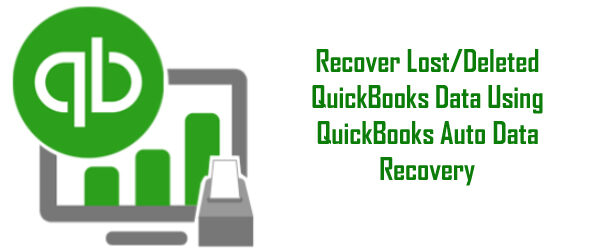
Summary: In this helpful blog we are going to explain on how to use the built-in QuickBooks Auto Data Recovery utility to restore QuickBooks data when companies, businesses or enterprise QuickBooks company data files gets corrupted or deleted permanently.
The Auto Recovery feature was introduced in QuickBooks 2012. The availability of auto data recovery feature in QuickBooks is very useful for handling data deletion/loss.
The data recovery team frequently restores data in files that are corrupt or damaged.
What Auto Data Recovery Do and Its Detailed Instructions
Auto Data Recovery helps in recovering your data in two ways:
- Recreate lost transactions by using your current Transaction Log file and a copy of your Company file.
- Recreate all, however the last few hours of the transactions is recreated with a copy of both your transactions files and company file.
Follow the below guide in the order as shown.
Note: At present the Auto Data Recovery is only available in QuickBooks Premier, Pro and Enterprise Solutions for Windows. You must also know that ADR file has a size limit of 1.5 GB and if your backup file size has crossed the 1.5 GB then ADR file will not get created.
Solution 1: To recreate all current transactions, use original Transaction Log file with Auto Data Recovery Company file
1: Open the folder where your company file is saved or stored.
- Note down the path that is shown in the No Company Open screen below:
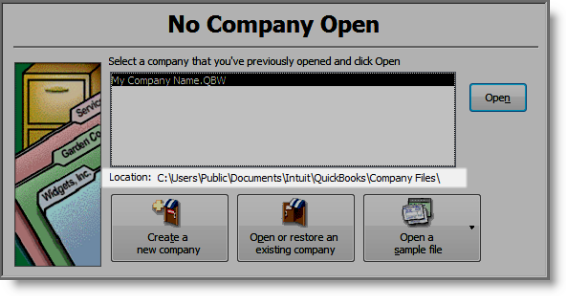
- Open the path in Windows Explorer.
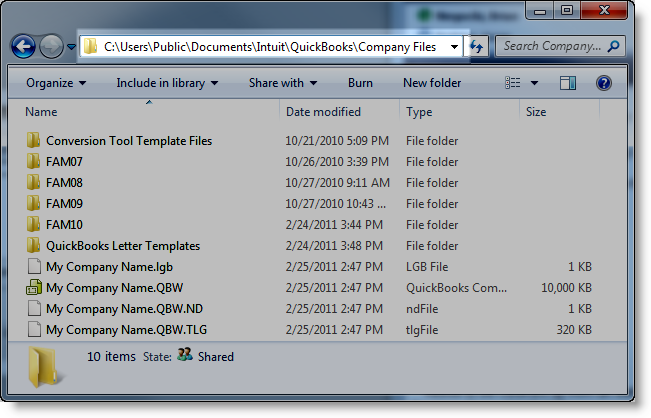
2: If needed, then make the file extension visible. Below follow the steps:
- Select Organize > Folder and search options.
- Click View
- Uncheck the box Hide extensions for known file types.
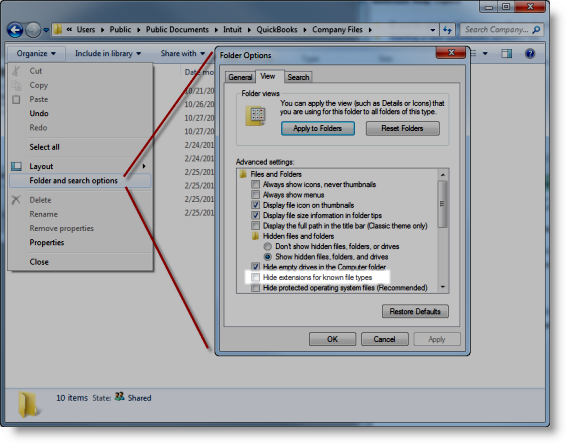
3: Note the file size and date modified for:
- Company file (.qbw)
- Transaction Log file (.tlg)
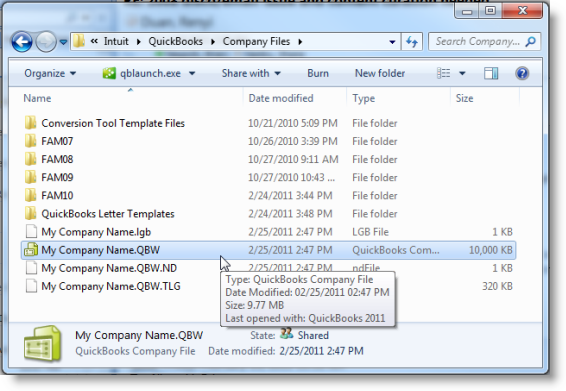
4: Make a new folder and give folder name – Old Files.
5: Move the Company files to the created Old Files folder.
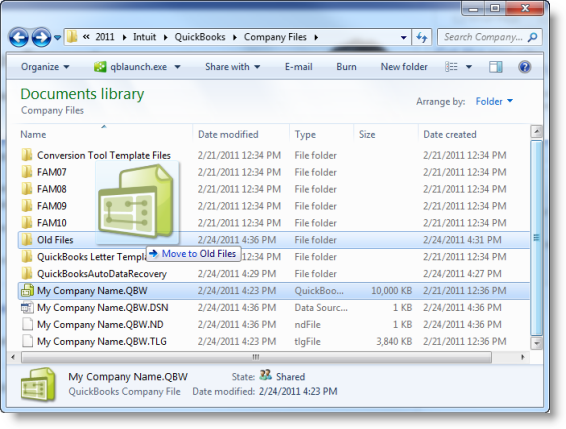
6: Open QuickBooksAutoDataRecovery folder available in the same folder where company files is stored.
7: Note down the file size and date modified for:
- The 12 hour Auto Recovery files:
- Company file (.qbw.adr)
- Transaction Log File (.qbw.tlg)
- The 24 hour Auto Recovery files (these files are always not available):
- Company file (.qbw.adr.old)
- Transaction Log File (.qbw.tlg.old)
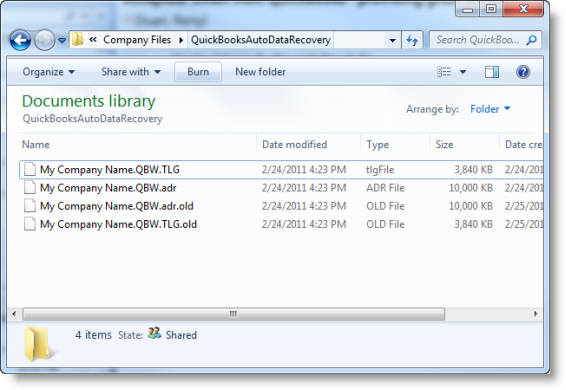
8: On the Company file .qbw.adr, just right click and select Copy.
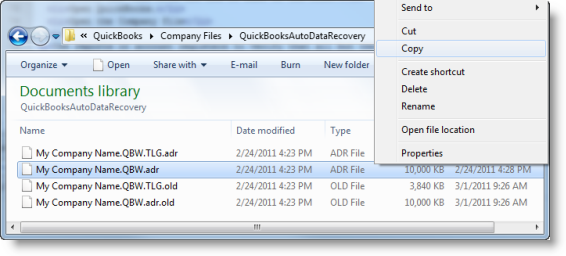
9: Go back where the company files is stored.
10: Select Organize and paste the copied .qbw.adr to this folder.
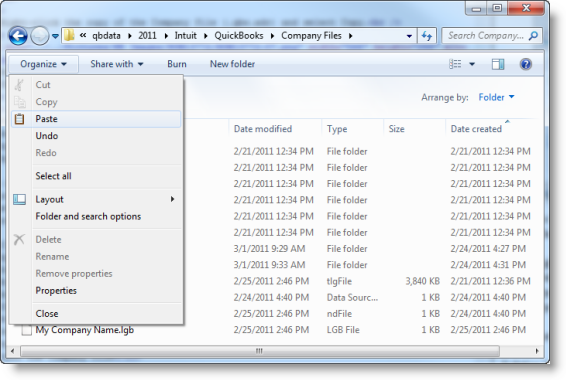
11: Right click on .qbw.adr Company file and select Rename.
12: Delete .adr from the file name and save it.
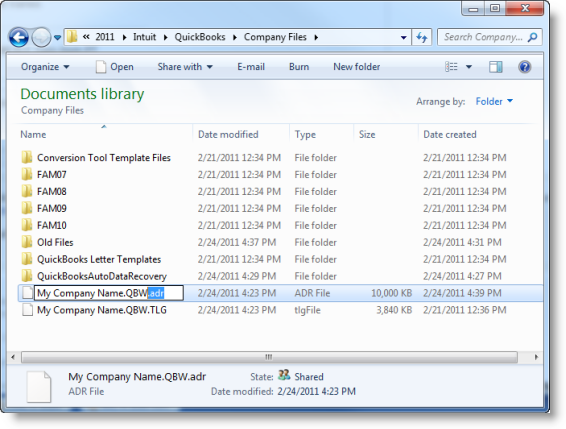
13: Launch QuickBooks and open the Company file.
14: Make use of account registers or reports to verify that all transactions are restored.
15: Finally use the Verify Data utility.
Solution 2: Recover all but the last 12 hours of transactions using Auto Data Recovery Company file and Transaction Log
Note: If you have tried Solution 1, then skip steps 1-12 and follow from steps 13.
1: Open the folder where your company file is saved or stored.
- Note down the path that is shown in the No Company Open screen below:

- Open the path in Windows Explorer.

2: If needed, then make the file extension visible. Below follow the steps:
- Select Organize > Folder and search options.
- Click View
- Uncheck the box Hide extensions for known file types.

3: Note the file size and date modified for:
- Company file (.qbw)
- Transaction Log file (.tlg)

4: Make a new folder and give folder name – Old Files.
5: Move the Company files to the created Old Files folder.

6: Open QuickBooksAutoDataRecovery folder available in the same folder where company files is stored.
7: Note down the file size and date modified for:
- The 12 hour Auto Recovery files:
- Company file (.qbw.adr)
- Transaction Log File (.qbw.tlg)
- The 24 hour Auto Recovery files (these files are always not available):
- Company file (.qbw.adr.old)
- Transaction Log File (.qbw.tlg.old)

8: On the Company file .qbw.adr, just right click and select Copy.

9: Go back where the company files is stored.
10: Select Organize and paste the copied .qbw.adr to this folder.

11: Right click on .qbw.adr Company file and select Rename.
12: Delete .adr from the file name and save it.

13: Go back to QuickBooksAutoDataRecovery folder.
14: Right click on copy of the Transcation Log file .qbw.tlg.adr and select Copy.
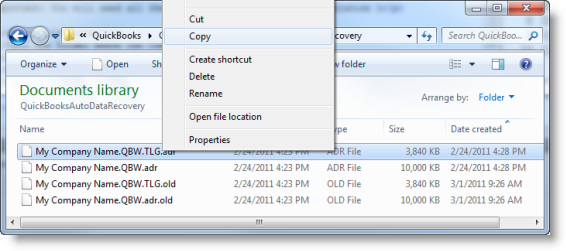
15: Go back to the folder where Company files is stored or saved.
16: Select Organize and paste the copied .qbw.tlg.adr to this folder.
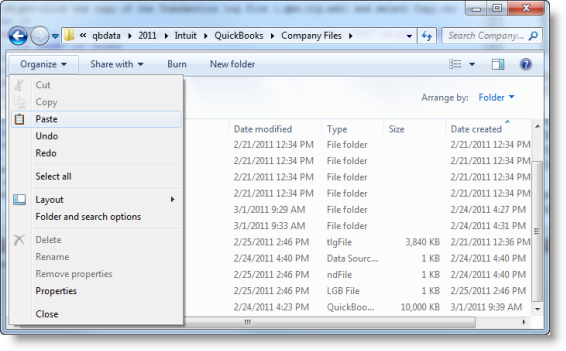
17: Delete .adr from the file name and save it.
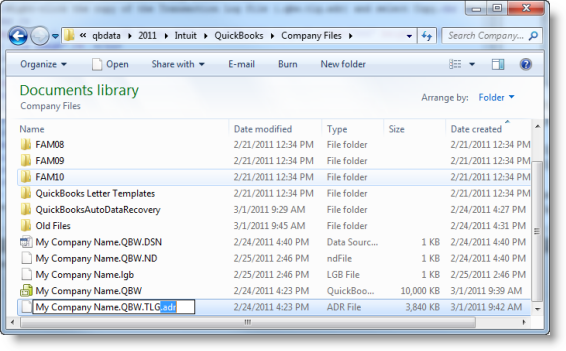
18: Launch QuickBooks and open the Company file.
19: Make use of account registers or reports to verify that all but last 12 hours transactions are restored.
Note: The transactions created in the last 12 hours of using QuickBooks, may require to be created.
20: Finally use the Verify Data utility.
Alternative Option: Use QuickBooks File Recovery Tool
If QuickBooks Auto Data Recovery fails to restore your deleted, lost or corrupted QuickBooks Company data files, then you can use professional QuickBooks File Recovery Tool that repair and restore corrupted or damaged QuickBooks data files and fix several error messages as well.
You Might Also Be Interested In:
Below Download QuickBooks File Recovery Tool:
 |
 |
 |
Conclusion
I hope the above solutions had helped in recovering your deleted, lost or corrupted QuickBooks company data files. However, if QuickBooks Auto Data Recovery fails then it is highly recommended that you can try QuickBooks File Recovery tool.
